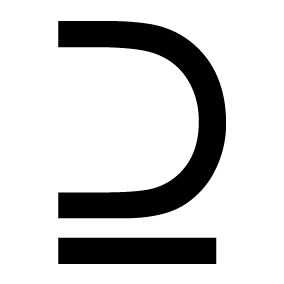Intentional recruitment aligned with business goals is a key enabler for design maturity, innovation, and long-term impact.
By Annette Öberg, Head of UX & Service Design at Swedbank
Take the opportunity to strengthen design roles during reorganization
Reorganizations can be powerful opportunities to elevate the role of design within a company and Annette has used these moments to advocate for and secure new design roles.
“In a company as large as ours, reorganizations—whether big or small—create unique chances to reinforce the role of design. When a new product unit was formed four years ago, there was a clear demand for design resources, though at the time, designers were organized elsewhere in the company. As discussions started around the competencies needed, I saw an opportunity to highlight the critical role of design in product development and to make the case for building that competence into our organization. I gained support from key people involved in recruitment decisions. There was this shared energy, a sense of creating something new that didn’t exist yet. I had people around me with that mindset, and we made the most of the lessons from before the reorganization. We kept what worked and added what had been missing.
Like many other companies, Swedbank is also navigating an agile transformation. But agile frameworks don’t always give design the visibility or space it deserves. If we had simply followed the playbook—sticking to the planned roadmaps—design would’ve remained on the sidelines. We wouldn’t have secured the roles or the influence we need. But thanks to the commitment of our designers, we’ve been able to raise awareness of why design must be integrated at every level of the agile setup, from train management and product owners to business owners and portfolio governance.
The work is starting to pay off. The team now has a seat at the table in key forums across different levels of the organization. One notable example is the introduction of a new role: Customer Experience Business Owner (CXBO). This position now plays a central part in several parts of the organization. We’re no longer just shaping how we work within the agile framework, we’re also influencing what gets prioritized. And even the name CXBO brings value, it helps signal the presence and importance of design competence in decision-making.
Another breakthrough came when I was able to expand the team with UX Writers, a competence I strongly believed the organization needed. During one reorg, I took the opportunity to explain the role and value of UX Writing to management. I knew that if I could just hire that first UX Writer—and find the right person—the impact would be clear. And it worked: we went from zero to seven UX Writers!”
By Natasha Ehlén, UX & Design Manager, Avanza/ Previously Head of Product Design, Storytel
The Value of a Structured Recruitment Process in Design
One of the key components of talent acquisition within design is a structured recruitment process, where the prospective candidates are assessed from both a professional and a cultural match point of view. The process includes two interview rounds with a focus on different skills, competencies, collaboration and communication. An important step in the process is a creative assignment which is assessed based on design craft, presentation and creativity. All steps of the process have clear criteria, making it easier to compare candidates and ensuring a fair process. Besides, all candidates undergo logic and personality testing. I believe that the rigorous recruitment process has helped our company bring in the best design talent while ensuring that the individuals will fit into the organisation and its culture.
“At Avanza, which has a high design maturity, a structured recruitment process is key to acquiring top design talent. Our approach ensures candidates are evaluated holistically—both professionally and culturally—to build a strong, collaborative team.“
By Bhu Nyström-Kandola, Design Manager at Volvo
Beyond Recruitment
Recruitment is often seen as the primary challenge in building a successful team. However, the real challenge lies in what happens after the hiring process. Maintaining a workforce that feels valued and sees a clear trajectory for their career is crucial.
“The biggest challenge actually with recruiting is usually after recruitment. It’s about maintaining the workforce, making sure that people see that they are valued and that their work is valued.”

